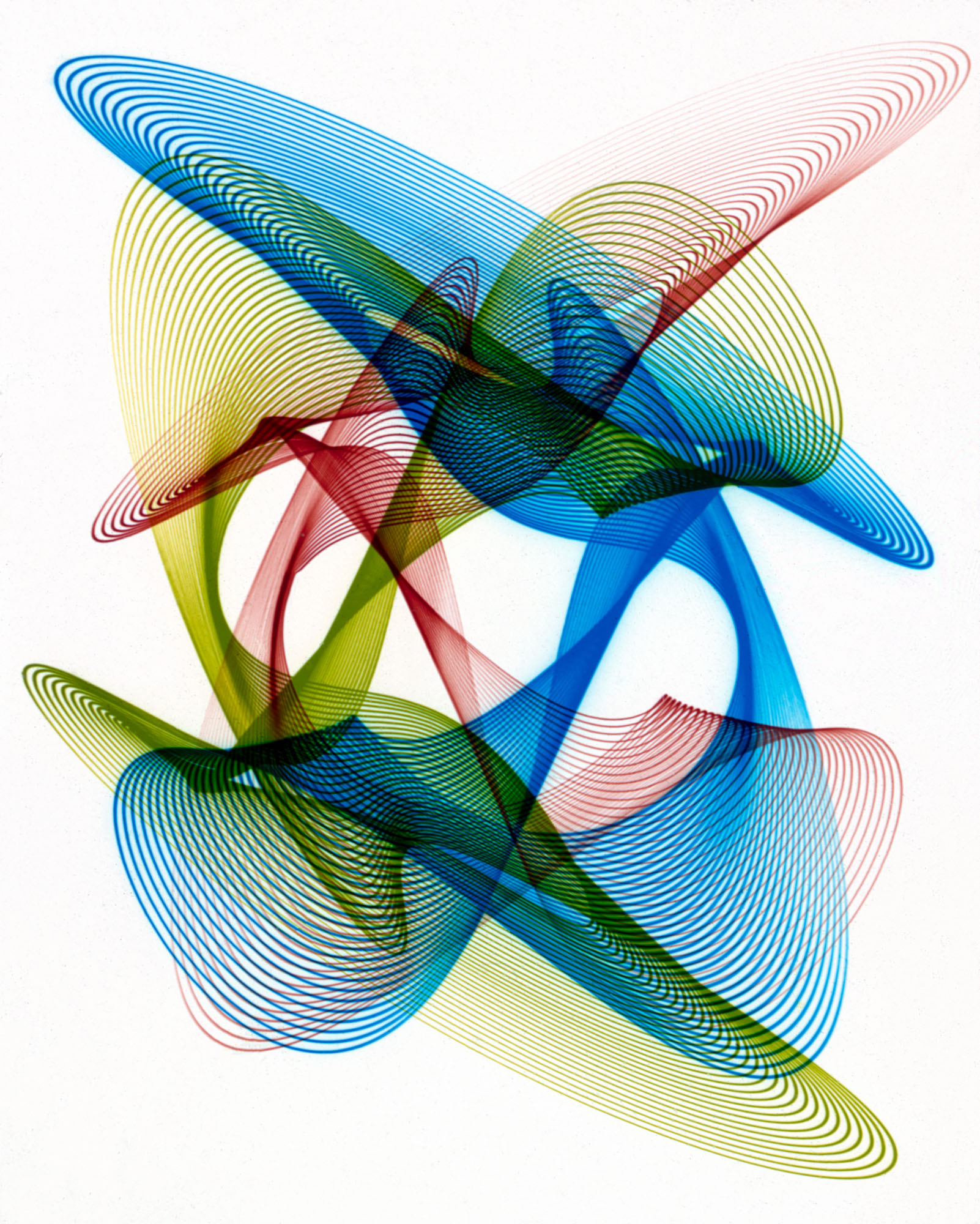

Heinrich Heidersberger's black and white rhythmograms were created between 1953 and 1965 as design elements for a mural in a technical college. He developed the rhythmograms from simpler to increasingly complex, almost deconstructivist forms, some of which were created using photographic techniques such as reversal and solarization.
Color was the next logical step. The archive contained colored foils measuring 6 x 6 cm, which Heidersberger assembled into five colored rhythmograms between 1960 and 1970.
Finally, in 1973, Heidersberger screen-printed two color rhythmogram posters (Andromeda and Energy) in black-light active neon colors that were marketed internationally and were particularly successful in London.
Heidersberger also received recognition from artistic circles for his topicality. Jean Cocteau, for example, was impressed by the relevance of his work. It was very early on that the Frenchman bought a rhythmogram as a birthday present for Picasso.
Heinrich Heidersberger’s rhythmograms explore the language of abstract formal structure in photography, with an intersection between geometry, technology, and perception. During the 1950s and 1960s, Heinrich Heidersberger created complex patterns that captured the invisible and fleeting of time and movement in singular image fields. Almost like an orchestra in motion that composes and traces the light onto the photographic plate through time and space. Heinrich Heidersberger developed a completely analog media art from this approach, which could hardly be created with digital means. The works seem part photography, parts sculpture, and parts architecture; they evoke a concrete sensibility that is both sensual and mathematical. The aesthetics of the rhythmograms are similar to the generative computer art of the Stuttgart School or artists like Herbert W. Franke and Manfred Mohr programmed generative processes with early mainframe computers.
03782_000_113_triple_white
- PriceUSD PriceQuantityExpirationFrom
- PriceUSD PriceQuantityFloor DifferenceExpirationFrom
03782_000_113_triple_white

- PriceUSD PriceQuantityExpirationFrom
- PriceUSD PriceQuantityFloor DifferenceExpirationFrom
Heinrich Heidersberger's black and white rhythmograms were created between 1953 and 1965 as design elements for a mural in a technical college. He developed the rhythmograms from simpler to increasingly complex, almost deconstructivist forms, some of which were created using photographic techniques such as reversal and solarization.
Color was the next logical step. The archive contained colored foils measuring 6 x 6 cm, which Heidersberger assembled into five colored rhythmograms between 1960 and 1970.
Finally, in 1973, Heidersberger screen-printed two color rhythmogram posters (Andromeda and Energy) in black-light active neon colors that were marketed internationally and were particularly successful in London.
Heidersberger also received recognition from artistic circles for his topicality. Jean Cocteau, for example, was impressed by the relevance of his work. It was very early on that the Frenchman bought a rhythmogram as a birthday present for Picasso.
Heinrich Heidersberger’s rhythmograms explore the language of abstract formal structure in photography, with an intersection between geometry, technology, and perception. During the 1950s and 1960s, Heinrich Heidersberger created complex patterns that captured the invisible and fleeting of time and movement in singular image fields. Almost like an orchestra in motion that composes and traces the light onto the photographic plate through time and space. Heinrich Heidersberger developed a completely analog media art from this approach, which could hardly be created with digital means. The works seem part photography, parts sculpture, and parts architecture; they evoke a concrete sensibility that is both sensual and mathematical. The aesthetics of the rhythmograms are similar to the generative computer art of the Stuttgart School or artists like Herbert W. Franke and Manfred Mohr programmed generative processes with early mainframe computers.